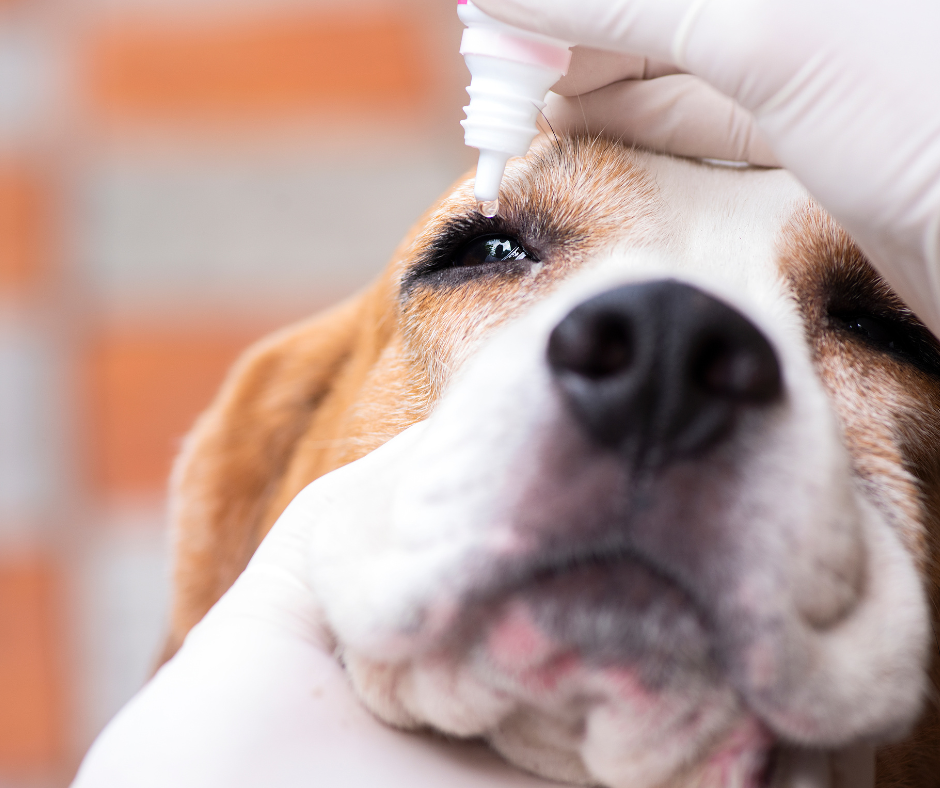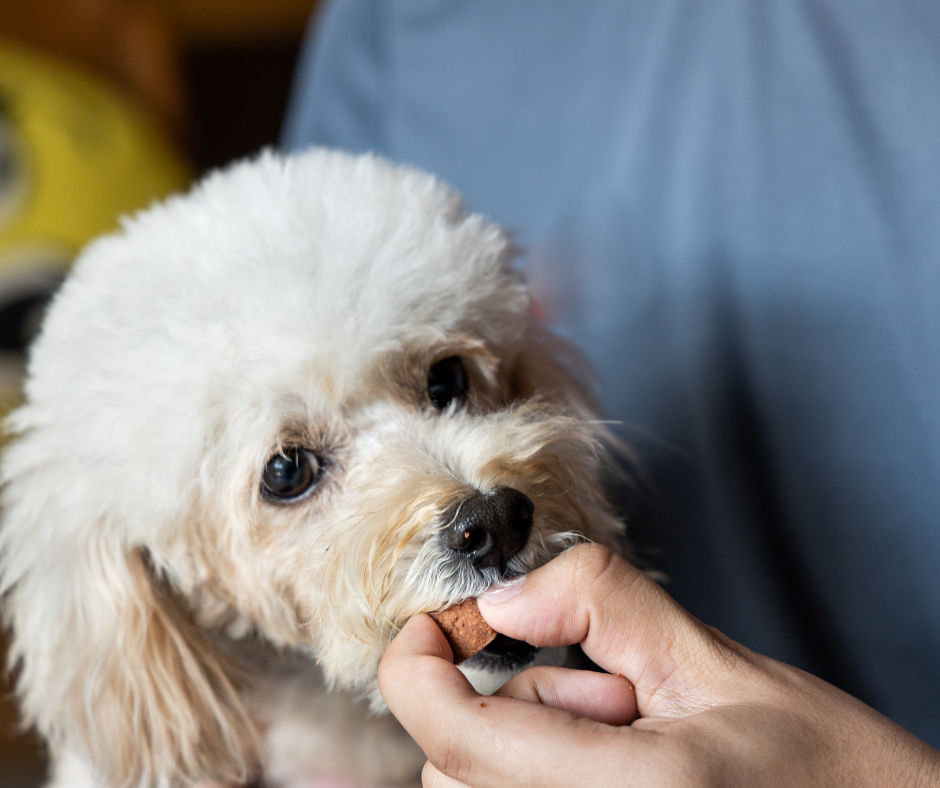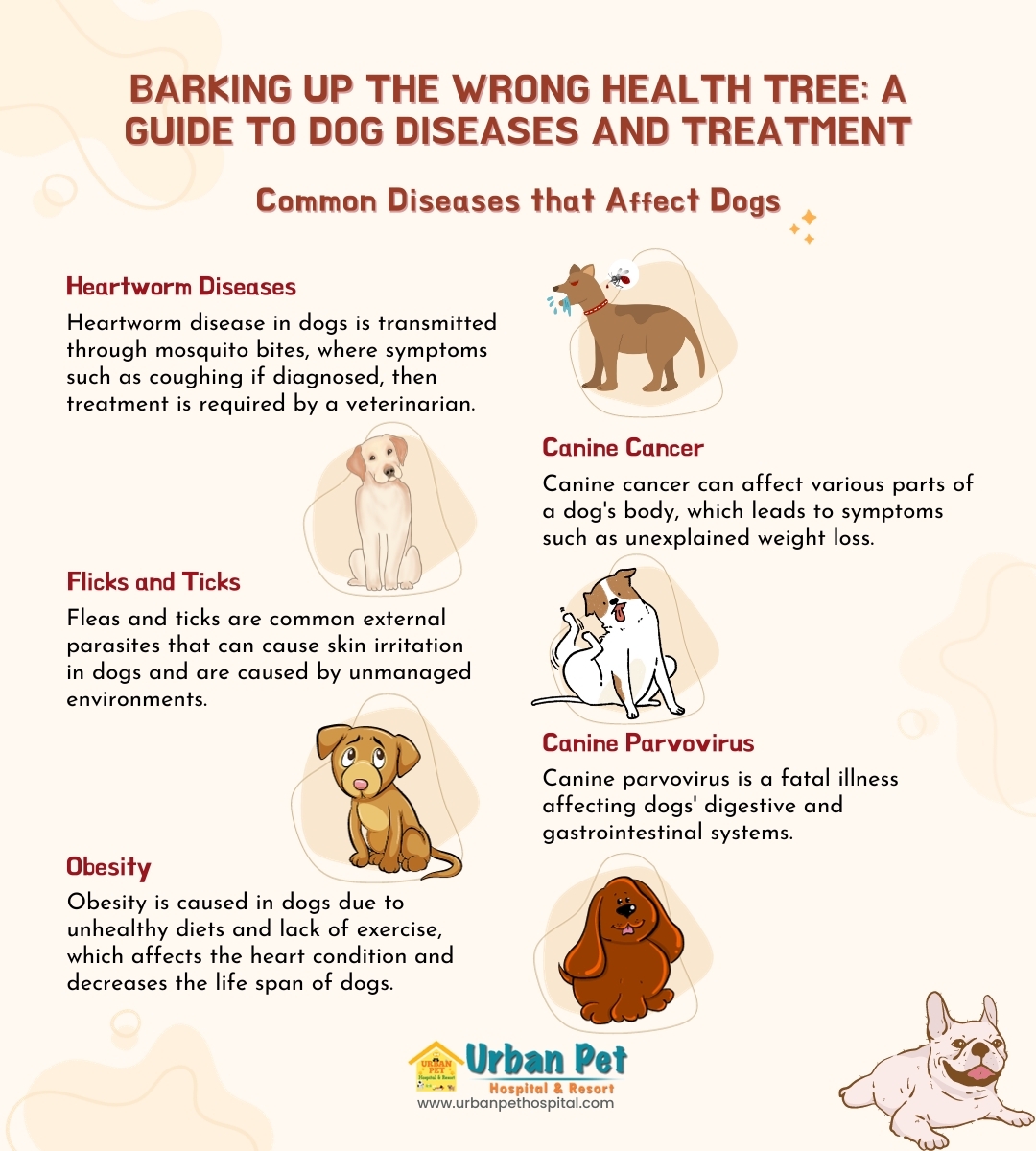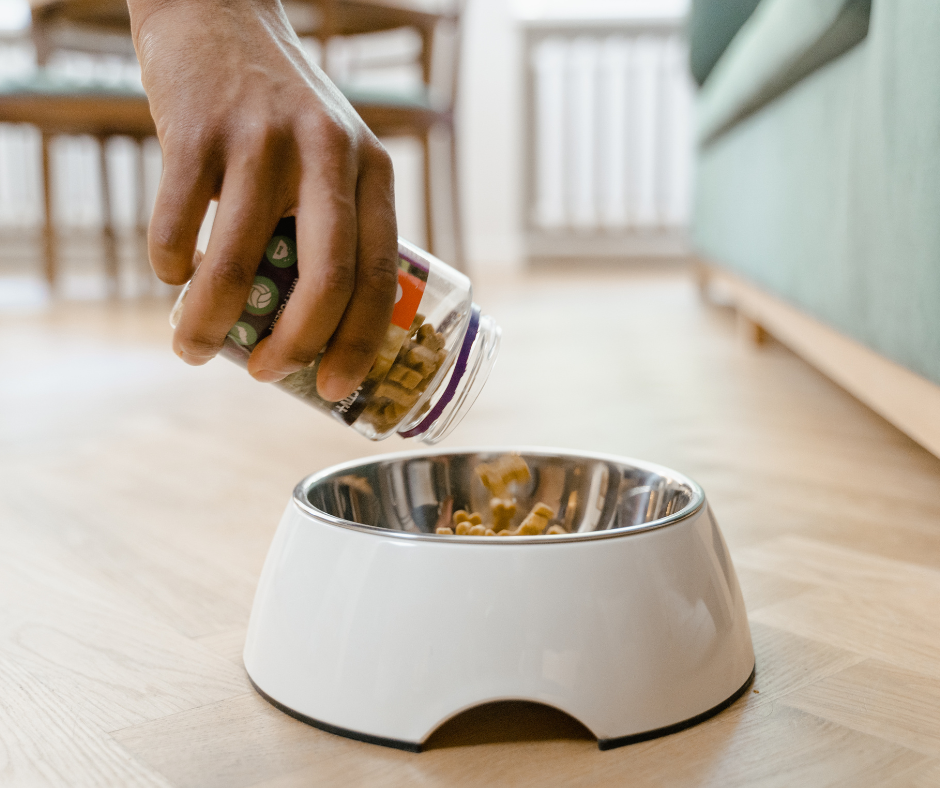Imagine relaxing in the park with your fur baby, the sun gently warming your skin, when suddenly you notice your dog behaving oddly –their tail drooping, eyes seeming distant.
You must wonder what is wrong with your furry friend. Remember, dogs are susceptible to common illnesses like heartworm disease, canine cancer, fleas and ticks, canine parvovirus, and obesity, which may suddenly show symptoms.
Here is how you can understand your pet’s suffering and help overcome the illness quickly.

Common Diseases that Affect Dogs
Dogs can contract diseases due to various factors, including exposure to pathogens like bacteria and viruses, genetic predispositions, and environmental factors such as poor nutrition or contaminated water.
Treating these illnesses quickly as soon as possible is critical to increase the dog’s chances of recovery.
For example, in the case of heartworm disease, the survival rate can be over 95% if treated early.
1. Heartworm Disease
In the world of dogs, a silent attacker is lurking, and it is more common than you might think.
Heartworm disease affects nearly one million dogs in the United States alone.
These parasitic invaders set up camp in your dog’s heart and lungs, causing symptoms that often go unnoticed until it is too late.
Here are the Symptoms
- Dogs with heartworm disease develop a persistent cough.
- They appear tired and unwilling to engage in physical activity.
- They lose interest in food and experience weight loss.
- As the disease progresses, dogs can develop difficulty breathing and rapid, shallow breathing.
- Severe cases can lead to a swollen or bulging chest due to heart and lung damage.
In the last stages, dogs may faint or collapse due to poor circulation and lack of oxygen.

So, how do you protect your furry friend from this hidden danger?
Here are the prevention tips,
- Heartworm Preventive Medication: Giving your dog a monthly heartworm preventive medication is the most effective way to prevent heartworm disease. Several options include oral medications, topical solutions, and injectable. Some commonly used preventative meds for dogs are,
- Regular Veterinary Check-ups: It will be best to schedule annual check-ups with your veterinarian. They can perform tests to ensure your dog remains heartworm-free and prescribe the appropriate preventive medication.
- Environmental Control: Reduce your dog’s exposure to mosquitoes, the primary carriers of heartworm disease. Keep your home and yard mosquito-free as much as possible.
If you suspect heartworm disease, do not waste time. Take your pet to the vet immediately because treatment in the early stages can be more successful.
Medications and Dosage for Heartworm Treatment
The medications used to treat heartworm disease include,
- Immiticide (Melarsomine): It is the primary drug to kill adult heartworms. This medication is administered by injection into the muscles of the lower back. Your veterinarian will determine the dosage and treatment schedule based on the severity of the infection.
- Doxycycline: In some cases, vets prescribe doxycycline to weaken the heartworms before administering Immiticide. This antibiotic is given orally at a dosage determined by your vet.
- Prednisone: It helps to reduce inflammation and manage the side effects of heartworm treatment. The dosage and duration of prednisone will vary depending on your dog’s condition.
2. Canine Cancer
Besides heartworm disease, another deadly foe is canine cancer. Cancer, such as lymphoma, is more common in cats than dogs. However, one in four dogs develop neoplasia, which can invade different organs.
Canine cancer is like a shadow that can strike any breed at any age and exhibit a wide range of symptoms, which can differ with the type of cancer, its location, and stage.
Here are Some Common Symptoms of Canine Cancer
- The most noticeable sign can be the presence of lumps or bumps on or beneath the skin.
- Swelling in any body part, including the limbs or abdomen.
- Unexplained weight loss, especially if your dog’s appetite is normal.
- Dogs with cancer may become more lethargic and less active.
- Some types of cancer can affect the respiratory system, leading to difficulty breathing and coughing.
- Gastrointestinal cancers can cause symptoms like vomiting, diarrhea, or constipation.
- Esophageal or oral cancers can make swallowing painful for a dog.
- Blood in the urine, frequent urination, or straining to urinate can indicate cancer affecting the urinary tract.
- Hair loss, seizures, and coordination problems appear in the last stages.
The medications and treatment procedures depend on the type and stage of cancer your dog has. Consulting with a veterinarian specializing in oncology will be best to make treatment effective.

Treatment for Canine Cancer
- Surgical Removal: Surgical removal of a tumor is possible if the cancer is detected early. Post-operative care and follow-up visits are essential to monitor the dog’s healing and check for any signs of reappearance.
- Chemotherapy: Chemotherapy can treat various forms of cancer in dogs, which is administered together with surgery or radiation therapy. Common side effects include nausea, vomiting, and bone marrow suppression. This procedure also decreases white blood cell counts.
- Radiation Therapy: Radiation therapy uses heavy energy rays to target and kill cancer cells. It helps to treat localized tumors and destroy cancer cells while protecting the healthy surrounding tissue.
- Immunotherapy: Immunotherapy is applicable for cancer, such as melanoma or lymphoma. It can cause immune-related side effects like skin rashes or diarrhea.
- Targeted Therapies: Targeted therapies focus on specific molecular pathways involved in cancer. They aim to destroy cancer cell growth without harming healthy cells. For example, mast cell tumors and distinct genetic mutations.
Check this infographics out for information

3. Fleas and Ticks
You know, even the tiniest creatures can pose a massive threat. Fleas and ticks may seem negligible, but they can transmit diseases that turn a dog’s life into a horror story.
Fleas are tiny, dark-brown insects that move quickly, while ticks seem like dots and can vary in size.
These bugs have the potential to spread Rocky Mountain spotted fever and deadly Lyme disease in dogs.
Did You Know?
- A single female flea produces 40-50 eggs per day and thousands of eggs within a month.
- Adult fleas and ticks can live for several weeks to months, depending on environmental conditions.
- The cost of flea control and treatment in the United States is $26 billion.

Symptoms of Flea and Tick Infestation in Dogs
- One of the most common signs of fleas or ticks is excessive itching and scratching.
- Due to blood loss and potential disease transmission, dogs may become lethargic and weak.
- Flea bites can cause red, irritated skin, often with small red bumps or raised welts.
- Dogs may develop anemia, leading to pale gums.
- They chew excessively or lick their paws, neck, back, and tail.
Preventive Measures to Follow
- Regular grooming with fine-toothed combs helps detect and remove fleas and ticks early.
- Give oral medications like Bravecto and NexGard.
- Provide topical spot-on treatments like Frontline and Advantage Multi.
- Vacuum your home regularly, wash your dog’s bedding, and maintain a clean yard.
- Use flea collars when walking your dog in tall grass or wooded areas.
You should give oral medications once every few weeks or months. Meanwhile, topical spot-on treatments and flea collars should be used according to the product’s instructions.
4. Canine Parvovirus
While heartworms, cancer, and parasites haunt your fur babies, a villain known as the Canine Parvovirus hides in the shadows.
This highly contagious disease can strike fear into the heart of any dog owner.
Canine parvovirus (CPV) mainly affects puppies and unvaccinated dogs.
Most parvo deaths occur 48-72 hours after the first sign of sickness. Therefore, it can be severe and life-threatening if not treated quickly.
Symptoms that Every Dog Owner Should be Aware of
- Severe vomiting and diarrhea, often containing blood or mucus.
- Dogs become weak, lazy, and unwilling to play or eat.
- A high fever is common in Canine Parvovirus-infected dogs.
- Tachycardia or rapid heart rate.
- Abdominal discomfort, fluid loss, and dehydration.

Infected dogs need intensive care in a veterinary hospital. The treatment involves supportive care, including IV fluids for dehydration, medicines to control vomiting and diarrhea, and antibiotics to manage bacterial infections.
The treatment period depends on the severity of the disease, but hospitalization for several days is essential.
In critical cases, blood transfusions may be necessary to overcome anemia.
Preventing canine parvovirus is essential because it can be challenging to treat once a dog is infected. Here are some prevention tips.
Measures to Follow for Your Dog’s Safety
- Vaccination: Ensure your puppy receives a series of parvovirus vaccinations as part of their core vaccine schedule. Adult dogs should receive regular booster shots to maintain immunity.
- Avoiding Contaminated Areas: Limit your dog’s exposure to areas where parvovirus may be present, such as dog parks and areas with a high dog population.
- Good Hygiene: Practice good hygiene by cleaning up after your dog and properly disposing of feces, especially in public areas.
- Quarantine Sick Dogs: If you have a sick dog or suspect CPV in your home, isolate the infected dog to prevent the virus from spreading.
5. Obesity
In a world where canines face threats from various angles, obesity emerges as an internal enemy.
Obesity in dogs occurs primarily due to an imbalance between energy intake (calories from food) and energy expenditure (physical activity and metabolic rate).
Factors such as overfeeding, poor diet choices, lack of exercise, and genetic disorders can lead to the storage of excess body fat, resulting in obesity.
Shockingly, over 56% of dogs in the United States are overweight or obese.
But what is truly frightening is the variety of health problems that come with excess weight.

Facts that Every Dog Owner Should Take to Heart
- Excess weight stresses a dog’s joints, leading to arthritis and an increased risk of injuries.
- Obesity can strain the heart and increase the risk of conditions like congestive heart failure.
- Overweight dogs are at risk of becoming diabetic.
- Obesity can cause difficulty breathing, especially in short-nosed breeds.
Technical Prevention Tips
- Feed your dog a well-balanced, portion-controlled diet appropriate for their age, size, and activity level.
- Provide daily exercise to help maintain a healthy weight.
- Consult with your vet to determine the right activity level for your dog.
- Regularly monitor your dog’s weight and body vitals.
- Avoid feeding table scraps, which can contribute to excess calories.
- Consider weight management medications if necessary.
- Sibutramine: This medication can help dogs feel full and reduce their appetite.
- Dirlotapide (Slentrol): Slentrol is an oral solution that reduces fat absorption in the intestines.
Following your vet’s guidance and committing to long-term weight management is crucial to help your dog achieve and maintain a healthy weight.
How to Protect Your pets Against the Diseases?
While the dark side of dog diseases is common, we must remember that dogs have a trusted friend. And that is their immune system.
The immune system is an awesome defender; hence, understanding it better helps to protect our furry friends. Here is how to do it.




1. Boost Your Dog’s Immunity
- Provide high-quality dog food with essential nutrients, including vitamins and minerals.
- Ensure your dog stays well-hydrated for optimal bodily functions.
- Keep your dog physically active to stimulate their immune system.
- Ensure your dog gets enough rest and quality sleep to support immune function.
- A healthy gut microbiome is vital for immune function. You can feed your dog probiotics and prebiotics to maintain a balanced gut flora.
- Ensure your dog has a stable, low-stress environment.
- Minimize exposure to environmental toxins, like household chemicals and pesticides.
As our journey of making pups disease-free nears its climax, we must explore the role of nutrition in preventing and managing diseases.
Proper nutrition is not just a way to maintain a dog’s health; it is their first defense against illness.
2. How to Take Care of Dog’s Nutrition
Opt for high-quality dog food that meets your dog’s age, breed, and size requirements. Look for brands with meat as the primary ingredient.

- Ensure your dog’s diet is well-balanced, containing proteins, carbohydrates, fats, vitamins, and minerals.
- Follow recommended portion sizes to prevent overfeeding and obesity.
- Avoid toxic foods such as chocolate, grapes, and onions.
- Establish a consistent feeding routine, two meals daily for adult dogs. However, puppies may require more frequent feedings.
- Always provide clean, fresh water to keep your dog well-hydrated.
- When changing your dog’s diet, do so gradually over a week to avoid stomach upset.
Check this infographics out for more information.
.jpg)
3. Foods that Help to Fight off Diseases

Here is the list of food items that help fight off canine diseases.
- Lean Proteins: Chicken, turkey, and beef provide essential amino acids.
- Leafy Greens: Spinach and kale offer vitamins and antioxidants.
- Fatty Fish: Salmon and mackerel provide omega-3 fatty acids.
- Berries: Blueberries and cranberries are rich in antioxidants.
- Sweet Potatoes: A source of vitamins and fiber.
- Pumpkin: Helps with digestion and is rich in vitamins.
- Carrots: They contain beta-carotene, which supports eye and skin health.
- Broccoli: It is the best source of fiber, vitamins, and antioxidants.
- Yogurt: Probiotics in yogurt promote a healthy gut and immune system.
- Oats: They are rich in fiber and can help with digestion.
- Apples: Apples provide essential vitamins and are a good source of fiber.
- Turmeric: It has anti-inflammatory properties and can be added to your dog’s diet in small amounts.
Conclusion
Canine health may have enormous challenges, but it also holds hope and a loving bond between humans and furry pups.
Next time you take your canine companion out, you can do so with a deeper understanding of their potential health threats and the power you hold to protect them. Prednisone Prescriptions.
To ensure the best health for your dog, contact Urban Pet Hospital, the top pet hospital in Urbandale.